In short, B2C is just an abbreviation for the term ‘Business-to-Consumer'- and as you may have already guessed it refers to transactions between businesses and individual buyers.
Although the phrase B2C can be applied to any kind of direct-to-consumer selling, it's now most renown for online trading and more specifically e-commerce.
Digital stores rose in popularity during the '90s- in fact, the Christmas period of '98 was nicknamed “e-tail Christmas.” That same year, Amazon made more than $1 billion in revenue for the very first time!
Traditionally, B2C-themed companies were brick and mortar stores. They'd sell to consumers on the high street or in the local shopping mall- perhaps stocking clothes, gifts, toys, etc.
Fast forward to 2019, and it's no surprise the rise in online selling has jeopardized the smooth running of conventional brick and mortar stores. More and more high street shoppers now opt for the convenience and savings of digital retailers.
In light of that, most brick-and-mortar shops have established a digital presence in order to stay afloat. For many shoppers, it's the ideal solution because they can enjoy the benefits of both these business models, at a time that suits them.

When we refer to B2C, there are five different kinds of businesses:
1. Direct Sellers
This is probably what you're most familiar with. By direct sellers, we mean an online store where buyers can purchase goods. It doesn't matter whether you're dealing with large manufacturers that create and sell products like Apple or department stores that sell products from a plethora of brands- for example, Debenhams, Target, and Fenwick.
2. Online Intermediaries
Online intermediaries are a kind of ‘middle man' who put buyers and sellers in contact with one another. However, they don't own either the products or services themselves.
Here are a few notable examples of online intermediaries:
- Etsy
- Air BnB
- Expedia
- Onthebeach.com
- eBay
Just to name a few!
3. Advertising-Based
This business model sounds a little more complicated, but in reality, it's rather straightforward. The advertising-based business model refers to companies leveraging high volumes of web traffic to sell online advertisements.
These ads then sell products or services to the visitor- in some cases; this will fall under the category of affiliate marketing.
On the whole, this model only works for brands that can give top-notch content away, for free. This encourages people to come from all around the internet to access whatever you've published. Then while they're exploring your digital platform, they'll engage with the ads.
Some of the best examples of companies using the advertisement-based B2C model include digital media outlets (more specifically, the ones who don't charge their readers a subscription to read their articles):
- The Huffington Post
- Observer.com
- The Guardian
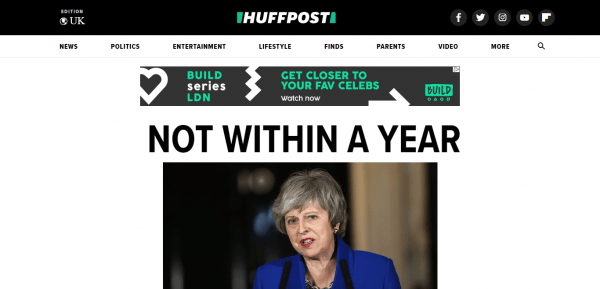
4. Community-Based
Community-based models, as the title suggests, utilizes online communities of people who share a common interest. Marketers can use these resources to advertise their products and services directly to their target market.
Great examples of these include-
- Online forums
- Social media platforms- most notably, Facebook. Digital marketers can craft laser targeted marketing campaigns to reach out and connect with their ideal customers.
5. Fee-Based
These websites charge their customers a subscription to access the content they've published. Generally, fee-based platforms offer a small taste of their content for free. This enables users to get a feel for whether they need the products or services the business provides- Netflix is a prime example.
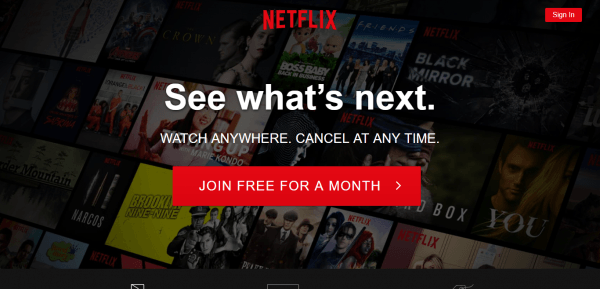
Which Business Model Should You Use?
Before settling on any of the above business models, as a B2C-orientated business, you should consider how your target demographic prefers to shop online. That way you can tailor a platform to best suit their needs.
The History of B2C Selling
An English inventor named Michael Aldrich was the first person to connect a TV to a computer that was able to process transactions via a telephone line. This was the birth of “teleshopping”- which arguably, was the first kind of online B2C sales.
Fast forward to the '90s, and as we've already said, the internet grew in abundance. In fact, it saw the registration of hundreds of thousands of domain names. Entrepreneurs soon saw the profit-making potential in e-commerce — however, the biggest hurdle for online store owners was overcoming security issues.
Moving Forwardelse's
In 1994, Netscape developed their Secure Socket Layers (SSL) encryption certificates- it was at this point buyers began feeling comfortable making online purchases. Then throughout the mid-'90s and early '00s, e-commerce went from strength to strength.
This brings us right the way up to today, and needless to say, e-commerce stores are here to stay. The stats speak for themselves from 2000 to 2009; online sales increased by more than 500%. As more and more entrepreneurs have enjoyed success online, e-commerce selling has continued to grow and evolve.
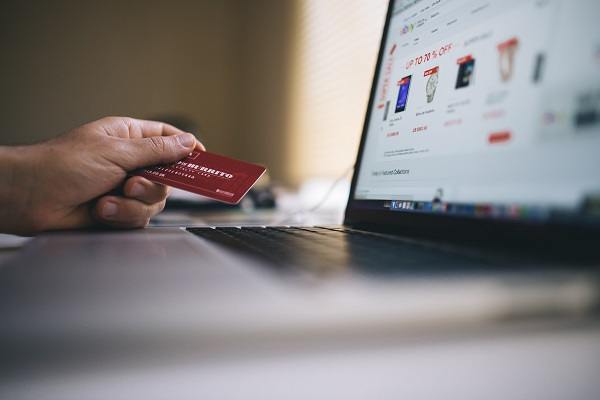
Challenges for B2C Marketers
Despite e-commerce presenting entrepreneurs with unlimited potential, there are plenty of challenges still facing B2C marketers today, including:
- Web design: as web developments have become more and more sophisticated, entrepreneurs need to possess an increasing level of technical knowledge- or, they need to budget to hire the expertise of a professional to make their site as intuitive and easy to use as possible.
- SEO: you also need to SEO-optimize your web pages to drive traffic; this works wonders for boosting exposure on search engines like Google and Bing. Undoubtedly, there's a good chance you'll secure more business if your website appears on the first page of search results. Set some time aside to research keyword phrases, study the ever-changing practices of SEO, and optimize your content. This may seem like a lot to do, but trust us, it'll be worth it in the end!
Top Tip: when you get around to conducting your keyword research, you should note, most consumers look for phrases consisting of at least four words. Be sure to bear that in mind as you begin compiling lists of potential keywords.
- Payment processing: E-commerce store owners need an SSL encryption. It's as simple as that. This communicates to visitors the site's safe for them to use. However, even if the site itself is secure, it doesn't necessarily mean the place credit card numbers are stored is. Entrepreneurs need to integrate their shops with services like PayPal and Stripe to ensure payment processing is secure. These brands have proven popular with both digital shoppers and online vendors- so if in doubt, trial these to start with.
- Limited time and resources: this is especially true of startups and companies looking to scale their business. To overcome these issues, you'll have to fork out money to pay for freelancers and software. In the long run, these are the only solutions for automating tasks associated with running and growing your e-commerce business.
- Handinglng your customer's data: arguably, this is the biggest hurdle facing B2C marketers. You need to keep up to date with all the latest regulations concerning the safeguarding of your customer's sensitive info — for example, GDPR.

The Next Stage of Growth: Mobile
Now we've highlighted the issues facing B2C sellers, let's move onto something more positive- the next era of growth.
As you may already be aware, this comes from online shoppers using their mobile devices to buy products and services. So it's hardly surprising B2C marketers in recent years have shifted their attention towards mobile consumers.
As you may have seen from the App Store or Google Play, loads of B2C brands are launching and making the most of smartphone apps. Some of the more popular ones include Groupon, Amazon, eBay, Etsy, etc.
Top Tip: If you're considering designing and launching a mobile app of your own, get to grips with the nature and purpose of your app before taking any concrete steps. For example, is it a loyalty app? Like the ones Starbucks provide. Or, an e-commerce app that enables online shopping, for example, Amazon and eBay. Apps usually have an evident purpose, so consider what kind of resource would best serve your target demographic.
We live in an era where almost everyone has and enjoys the use of a smartphone. Most of us have unlimited internet access either via 3 or 4G or WiFi- this provides potential customers with a constant stream of information. Entrepreneurs need to do their utmost to break through the noise and connect with their prospects.
The means in addition to providing a handy smartphone app, B2C brands should consider utilizing social media platforms. When used well, this is a fantastic opportunity for building a rapport with your target demographic. In fact, as many as nine in ten online shoppers expect to see frequent interactions on social media- so, give consumers what they want and start engaging with them!
With all that being said, social media provides plenty of distraction for your buyers. So, hook them in with your content, this is the only way to keep them engaged. The majority of your posts should focus on entertaining and educating your audience in a way they respond and resonate with.
If you're not sure where to begin, keep active in all these places:
- Facebook,
- Twitter,
- Instagram,
- Pinterest,
- Snapchat,
Although there are plenty of advantages to utilizing social media, there are also a few drawbacks. For example, if you're dealing with a disgruntled customer, you may have your brand publicly slandered on social media. This makes the need for excellent customer service and an enjoyable user experience even more essential.

B2C vs. B2B
There's a big difference between B2C and B2B (business to business) customers.
When a business purchases something, they're far more likely to conduct tons of research before buying anything. More often than not, companies need to invest in products and services to either protect or increase their profits- either way; there's a solid business-orientated reason for purchasing.
Plus, the person or people in charge of spending the companies money will be held accountable. This means they'll want to make any investment worth their while- otherwise, they could jeopardize their reputation and in more severe scenarios, their jobs!
As you can probably gather, B2B purchases are best described as ‘rational,'- the decision makers often consult other colleagues to ensure the purchase meets an agreed upon set of criteria. As such, the sales process is far more complex and takes longer. Often B2B customers require several proposals from numerous vendors before they settle on a final decision.
Conversely, B2C buying decisions are typically only made by one person and consist of one-off purchases (unless they're opting for a subscription-based product or service)- so it's not surprising B2C customer are famous for impulsive spending- they're far more likely to make a purchase based on emotion rather than facts.
On the whole, B2C consumers look for products and services that provide a solution to their immediate needs- so, they're not likely to spend a lot of time researching the purchase beforehand. However, this isn't always true- especially if the customer's looking to buy a big ticket item like a laptop or a TV.
This means B2C marketers sometimes have to create and communicate the needs consumers have for their products and services as part of their marketing strategy. It's the job of the marketer to convince the buyer they need their merchandise, especially, if they don't yet know it!
This is why understanding the kind of lifestyle your consumers lead and the sorts of people they look up to are vital factors in guiding your digital marketing campaigns and crafting the tone of your brand's voice.
Although there's a strong argument to suggest the line between B2C and B2B markets is blurring, there are still fundamental differences in their marketing methods.
The driving force behind B2C purchases is the product itself, the price, and the convenience it provides- whereas B2B buying is more likely to focus on the personal relationship between the buyer and seller, and whether there's proven track record of how the product performs.
B2C companies typically target a plethora or potential buyers comprising a wide range of demographics. This makes sense because B2C brands usually sell products and services that anyone can make use of.

The Difference Between B2B and B2C Marketing
As we've just said, there's a large degree of overlap between B2B and B2C marketing. However, the aim of B2B marketing is usually transforming leads into prospects, and then eventually into buyers and later, fans of your brand.
Whereas, B2C brands tend to focus on driving traffic to their digital store and harnessing leads via an emotional connection. Then they'll use their branding, content, and customer service to establish a memorable name for themselves.
In recent years B2C brands have taken a leaf out of B2B marketing methods. B2B companies have put a greater emphasis on informing and teaching prospects via their content (either via videos or blog posts). This is a fantastic technique for positioning yourself as an expert in your niche and for keeping potential consumers engaged with your brand.
When it comes to content marketing, many B2C marketers have found blogging particularly handy for turning website visitors into buyers. In fact, 80% of entrepreneurs who run a blog on their e-commerce site, claim their business has improved as a direct result of frequently publishing high-quality content.
Perusing and digesting content produced by online brands are increasingly becoming part of the buyers shopping process. As many as 26% of consumers say they browse the retailer's website before purchasing anything- that's over a quarter!
When we talk about ‘content,' we're not just referring to your blog posts (although it's indeed a significant component) but also your web copy, slogans, and visuals. All these play an essential role in ensuring prospects remember your brand.
Top Tip: Try using things like quizzes on your website. This is a fun way of providing users with hands-on experience.
Another critical difference is that B2B marketers have traditionally used all kinds of tactics to build a personal rapport with businesspeople. Whether it's conducting in-person meetings or reaching out to prospects via social media- cultivating and maintaining long-term business relationships is the ultimate aim.
Whereas, B2C marketers tend to focus on boosting their volume of transactions. Yes, it goes without saying B2C businesses want to enjoy a long relationship with their customers, but these aren't the same kind of personal relationships cultivated in B2B markets.
Expertise Vs. Value Propositions
On the whole, B2B companies want to convey themselves as authorities in their industry. This is usually achieved via a combination of live events, digital and printed content, and social media marketing. B2B marketers then use these opportunities to give their expert advice and build credibility.
Whereas B2C marketing communications tend to center on offering some kind of brand value proposition. This could include any of the following:
- Providing coupon codes that entitle shoppers to a discount
- Boast a comprehensive range of products
- Offer top-notch craftsmanship
- Run a loyalty scheme
On the whole, if you keep things simple, jargon-free, and provide customers the kind of value they want- your B2C marketing campaign stands half a chance!
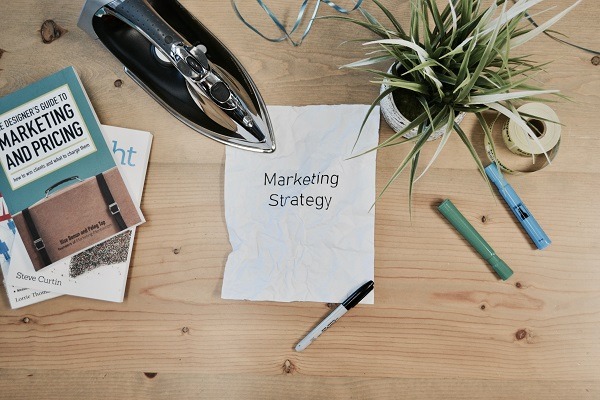
Fewer a High-Quality Clients Vs. High Volume Selling
Again, as we've already implied, B2B marketing is more likely to target a smaller number of clientele. They can afford to do this because the financial value of their products and services tend to be higher than B2C products. This is why building long-standing business relationships are crucial to the overall success of B2B businesses.
Whereas, as we've said before, the market for most B2C brands is incredibly broad- this makes standing out from the crowd a challenge. Marketers need to familiarize themselves with digital marketing campaigns such as SEO, PPC, and paid ads on social networks like Facebook. This rapidly increases the chances of securing the high volume of sales they need to generate a profit.

Tips for Building a Successful B2C e-Commerce Marketing Strategy
As we've already said, B2C marketers need to create an emotional connection with their target audience. Luckily for you, we have a few surefire tips that'll help you do precisely that:
1. Get into the Minds of Your Consumers
By this we mean, you need to delve into the psychology of your customers. Obviously, it would be a massive overgeneralization to say all buyers behave alike. However, you can use the data provided by Google Analytics to get a better idea of your target demographic.
This is essential when it comes to crafting personalized content. Without knowing what your buyers genuinely care about, you'll never connect with them on an emotional level. Period.
This means you need to understand the following:
- What social networks and forums do they hang out on?
- What format of content do they engage with?
- What devices do they use to browse the web?
- What interests them?
- What inspires them?
- Who do they look up Don't?
- What are they struggling with?
- What excites them?
- What intrigues them?
You get the idea! Use the answers to these questions to create a customer avatar you can refer back to as you kickstart the content creation process. Once you've got to grips with your target demographic, you can then modify the voice of your brand and your marketing strategies to best attract their attention.

2. Create Content that Converts
Content marketing is a cost-effective way of converting browsers into paying customers. You could have purchased the best software and hired the best employees, but if the content you're publishing is poor quality, you'll struggle to boost your conversion rate.
Top Tip: Keep a finger on the pulse of which subjects intrigue your consumers. Then use this to influence the topics of your blog posts and advertisement copy.
Other than long-form blog posts, your marketing needs to be short. Online shoppers have tiny attention spans, so copy that gets right to the point is just the ticket!
This is especially true of all the following:
- Product descriptions,
- Email marketing campaigns,
- SMS text messages,
- Web page copy
Only Publish Your Best Material
The competition facing B2C businesses has never been so fierce- so, put your best foot forward. It's far better to post one premium blog post per week, rather than publishing a daily piece of content that's sub-par.
Once you've set the standard of your content, you need to continually deliver the goods or better yet, exceed your reader's expectations.

You Don't Always Have to Tell a Story
Yes, storytelling is an excellent format for creating a blog post. However, there are other writing techniques you can use. You'll be relieved to hear, not all your pieces need a story or a real-life experience to flesh them out- your audience doesn't expect this from you!
A straightforward blog post providing actionable information can be enough- if it's well written.

Have a Voice and Speak Out
It's imperative your voice is heard above the rest. This is why having something different to say is essential. If you have an original thought, write it down. Readers are far more likely to listen to a unique perspective than someone else's regurgitated opinion.

Use Data
You want people to trust your brand, and part of building that credibility stems from producing content your audience can rely upon as fact.
If you have an opinion, back it up with a statistic, a case study, a quotation, etc., then cite the resources you used by including a hyperlink. This provides hard proof you're not making this stuff up, and that you're taking the time to research what you're passionate about- prospects love this!
Practice Makes Perfect
Writing might not be a skill that comes naturally to you. There are tons of entrepreneurs that have an incredible talent for sales and marketing but lack the creative writing chops to go the distance.
If that sounds like you, never fear- because practice really does make perfect, writing is an art form that needs to be nurtured, so keep at it. The more you write, the better you'll get- simple right?
Take the time to research writing tips and tricks and then put everything you've learned into practice. Trust us; there's tons of literature on the subject, a simple Google search will suffice. The more time and effort you invest in your writing, the more customers you'll draw to your website.
Also, if you have the time, read an actual book. Studies show the more you read, the better the quality of your writing- how awesome is that?

3. Optimize for Conversions
Ultimately, you need to fuel your marketing strategies using data- but what if you don't have any customer insights yet?
The best way to harness this kind of info is by giving something free away (perhaps an e-book, a video training series, a small physical gift, etc.). in exchange for their name and email address.
From there, you can utilize marketing analytics tools to find out more about your customers. Knowledge is power. So, use this info to craft communications that resonate with your customers and to predict future consumer patterns and behaviors.
Top Tip: Once you have a name, you can personalize your email marketing campaigns, which again is something consumers, love!
Why Does This Work?
Often shoppers think they're getting a good deal when they receive something for free. It's down to you to bolster the perceived value of your freebie. Provide actionable and exciting information and market it so your customers realize how much they could benefit from the lead magnet you're offering.
I remember Jon Penberthy once saying, your lead magnet should be so valuable that someone would happily buy it- the fact they're getting it for free is just an absolute bonus!
This is partly why if you're providing discounts on products instead of a free giveaway, occasionally shoppers feel cheated. After all, they have to spend some of their money to feel the benefit. Whereas, when consumers get something for free, they're more likely to believe you've their best intentions at heart.
What Next?
Use an opt-in form on your landing page to gradually build your email list. Once you have the email addresses of your consumers, you can nurture a relationship with your audience by sending them product discounts, links to your most recent blog posts, newsletters, etc.
My best advice to you is to strategically plant an opt-in box on your website where customers can sign up.
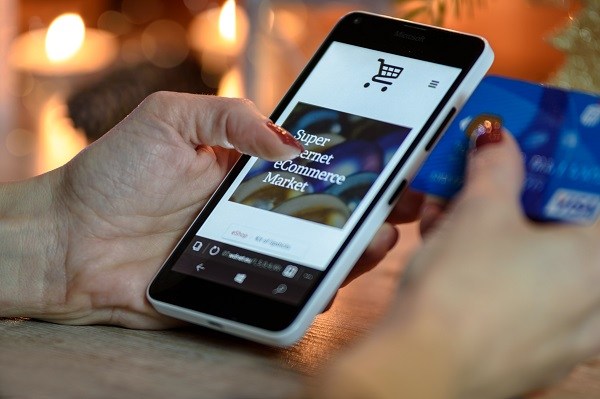
4. Utilize AI Technology
Artificial intelligence (AI) is terrific, especially when its combined with machine learning and big data. AI provides laser targeted and highly personalized user experiences. Typically, this is a far more cost-effective form of digital marketing because you're more likely to deliver the right message to the right person at the optimum time.
You can also use AI to analyze your consumer data to get a more detailed insight into your target demographic.
5. Boost Credibility
An increase in brand credibility is essential for increasing conversions. You need to show evidence that not only does your brand talk the talk, but you also walk the walk.
So, if you have any glowing testimonials from satisfied customers, then plaster these all over your website. In fact, as many as 42% of online shoppers say they'd like to see more testimonials on e-commerce sites- so give your consumers what they want!
It's not just testimonials; you can also use the following social proof to boost your credibility:
- Customer ratings,
- Customer reviews,
- Best selling products,
- Certifications and awards
- Endorsements
- Mentions in the press
- Logos of impressive companies you've worked with
Any of the above will work wonders for nurturing trust with your prospects.
6. Retarget Potential Customers
There are plenty of ways you can retarget potential customers. For example, if someone visits your website and doesn't buy anything you can launch a retargeting campaign using Facebook and/or Instagram.
This gives you a second chance to provide your potential customer with highly relevant content. These kinds of ads are fantastic for boosting brand awareness and ultimately, profits.
Typically, there are two methods for retargeting customers on social media:
Creating a “Look-alike” Audience
When you create a lookalike audience, you can show social media ads to users whose interests and demographics match those of your existing customers- how awesome is that?! This drastically increases the chances of securing the sale!
Retargeting Customer Who've Abandoned Your Site
This does exactly what it says on the tin; you can retarget people who have already visited your site but failed to buy anything. Perhaps you could try offering them a coupon code or some other discount to entice them?
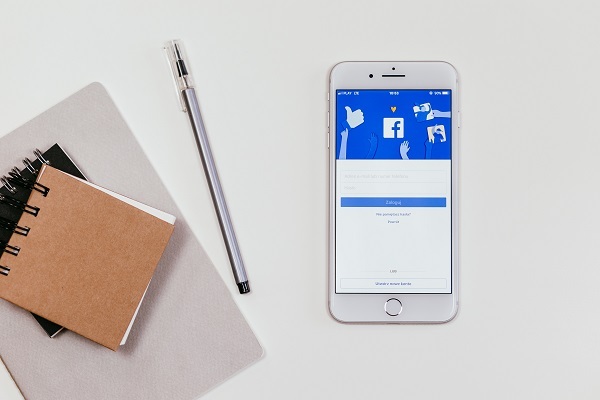
A Little More on Social Media
It goes without saying, social media users don't scroll through their newsfeeds to be bombarded by advertisements. Instead, they're there to interact with their friends, follow influencers, and watch funny videos! However, that doesn't mean you can't use social media to your advantage
When done well, e-retailers can subtly use sponsored posts that display just like regular social media posts. These kinds of ads aren't quite as intrusive and are fabulous for building a rapport with your audience- so it's not surprising B2C marketers are using this technique more frequently.
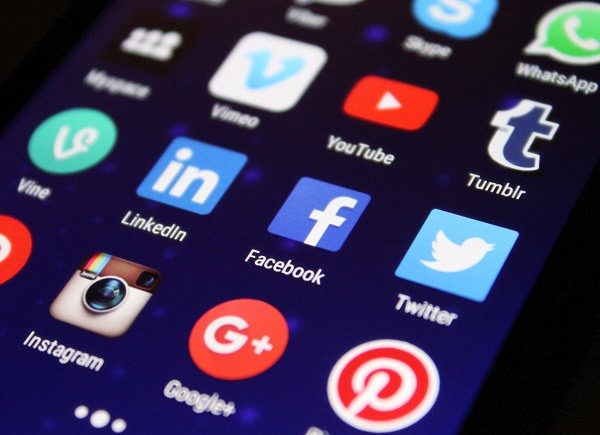
Use Abandoned Cart Emails
In addition to retargeting campaigns, you can also send emails to prospects who've abandoned their shopping cart. It's no secret that startups often struggle to make their first few sales.
In fact, as many as an average of 23% of online shopping carts are abandoned- That's almost a quarter! However, all's not lost, you'll be pleased to hear, an average of 44% of abandoned cart emails are opened. This of this email as a second chance to secure the sale, so make it count!
How Do Abandoned Cart Emails Work?
Abandoned cart emails are automatically sent when a potential buyer leaves their digital shopping trolley unattended for an extended period, or if they click off your site with products inside their basket.
Typically, these kinds of emails recommend the merchandise they abandoned, in addition to other similar goods the prospect may like.
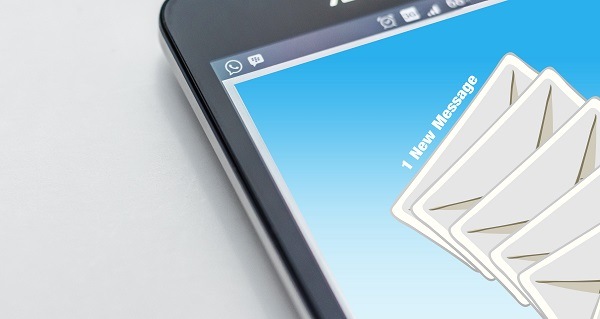
7. Automate Your B2C Marketing Campaigns
If you haven't already, automate some of your marketing efforts. The stats speak for themselves, B2C marketers making the most of automation have seen conversion rates as good as 50%!
Like we've already said, the B2C target market is often massive- so personalizing your marketing isn't possible without using automation software. This works wonders for scaling and extending the reach of your message.
For example, tools like MailChimp, enable users to send email blasts at a time where they're most likely to engage with your content.
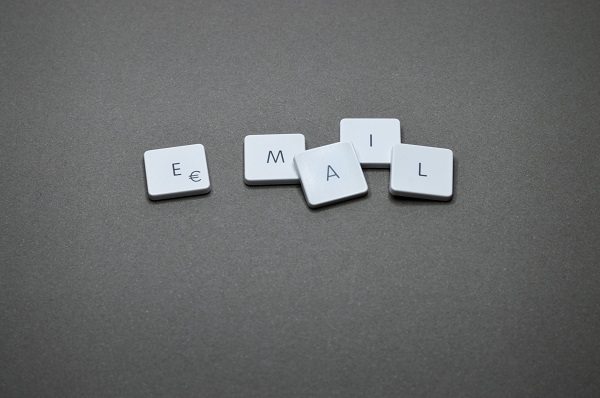
8. Launch a VIP Scheme to Create a Sense of Exclusivity
People love to feel special- we're all guilty of it! This is why VIP programs work so well. People love the idea they're getting additional perks and benefits that others aren't entitled to!
They're amazing for commanding customer loyalty, boosting conversions, and increasing engagement with your company.
Ultimately, this encourages fans of your brand to spend more money on your business, in exchange for extra value and priveledges- which in turn increases profitability- what's not to love about that?!
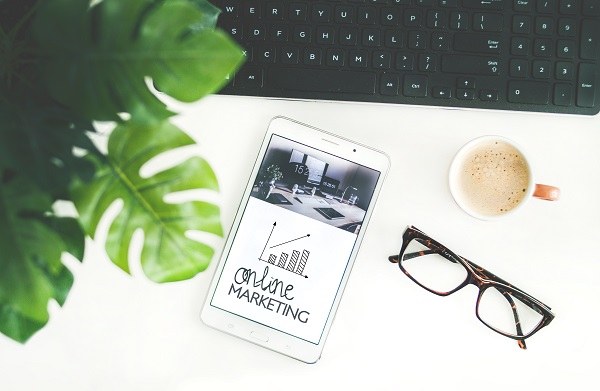
Other B2C Marketing Tips
What are Reminder Emails?
Why Are Email Marketing Campaigns So Effective?
There are so many reasons why email marketing works well for B2C markets. Here are just a couple of reasons why:
- You can reach your consumers directly- rather than battling for their attention as you would on social media, you send a message straight to them. This is what we call a ‘non-interruptive' medium. Your e-mail subscribers have presumably opted to receive updates on your brand and enjoy consuming content.
- Unlike cold calling or door to door sales, email isn't as intrusive or aggressive. The receiver of the email can read it at a time that's most convenient to them. It's important to show prospects you respect their time- if you want to get on their right side!
Final Thoughts
We hope that you now have a better idea of what B2C entails. If you're considering launching a brand in this market, this should provide you with a broad foundation for a few of the things you need to know.
Do you have anything to add on the subject? If so, please feel free to add your thoughts in the comment box below. We love hearing from our readers and welcome healthy discussion. Speak soon!



